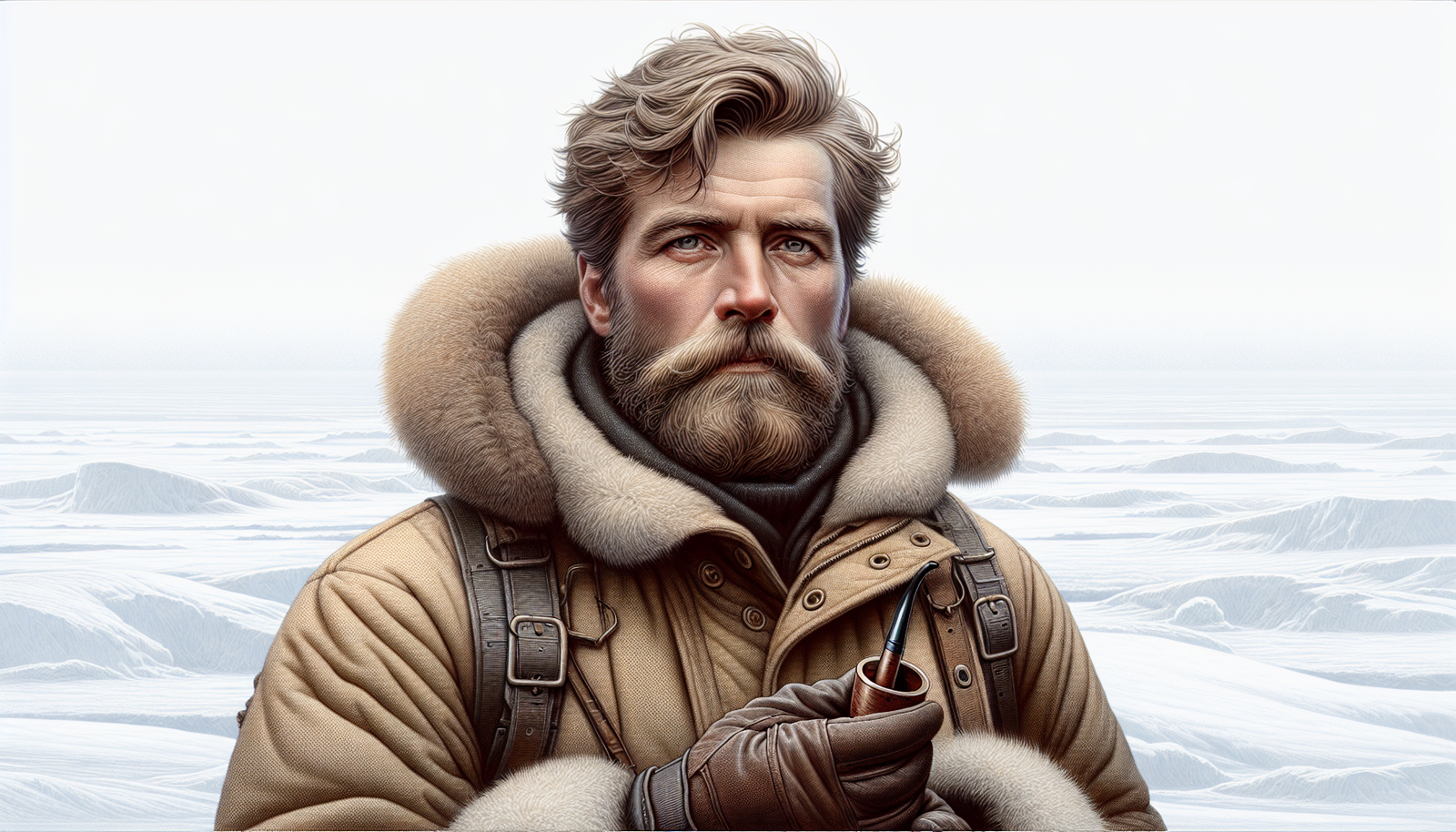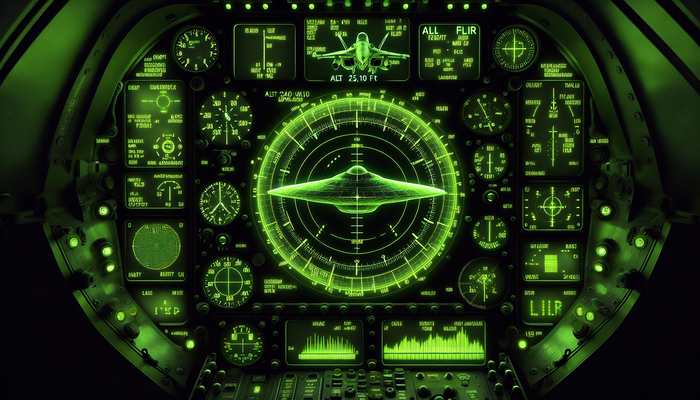Exploring Admiral Byrd’s Expedition to Antarctica

By Sanjay Kapoor, Ufologist
Introduction: A Journey Beyond the Ice
Picture a continent vast, silent, and draped in ice, a place at the bottom of our world that remained largely a white space on maps for centuries. Antarctica. Its very name evokes images of desolate beauty, extreme cold, and the ultimate test of human endurance. This frozen landmass has long been a powerful magnet, drawing explorers who dared to challenge its hostile embrace. Among these titans of exploration, one name rings particularly loud: Admiral Richard E. Byrd. He wasn't just another adventurer planting flags; he was a figure who straddled two distinct eras of discovery, a visionary who skillfully navigated the transition from the age of sail and sled dogs to the dawn of aviation and radio communication, fundamentally changing how humanity interacted with the polar wilderness. We often think of explorers facing the elements, but Byrd also mastered the intricate dance of logistics, finance, and public perception. This journey into Byrd's Antarctic expeditions isn't just about reaching poles; it's about understanding the complex tapestry of ambition, innovation, human drama, scientific pursuit, and the persistent pull of the unknown that defined his monumental efforts and shaped America's gaze towards the icy south. We’ll follow his path from privately funded adventures that captured the public imagination to large-scale, government-backed operations reflecting shifting global strategies, ultimately exploring his lasting impact on our knowledge of Antarctica and the international cooperation that seeks to preserve it.
The Southern Lure: Laying the Groundwork for Antarctic Conquest
Before Antarctica became the primary theater for his ambitions, Richard E. Byrd had already carved out a reputation built on naval service and pioneering aviation. A 1912 graduate of the U.S. Naval Academy, he became a naval aviator (#608) in 1918, a crucial step in his trajectory. His early naval career wasn't just about shipboard duties; he was decorated for bravery, twice diving into the sea to rescue sailors, once reportedly in shark-infested waters. After World War I, he applied his sharp mind to the challenges of flight, contributing significantly to the navigational planning for the Navy's historic 1919 NC-4 transatlantic flight – the first crossing of the Atlantic by air. His development of navigational tools like the bubble sextant and wind-drift indicators was vital when flying over vast, featureless oceans or ice.
His polar journey truly began in the north. In 1924, he commanded a naval aviation detachment supporting Commander D.B. MacMillan’s Arctic expedition to Greenland. Gliding over glaciers and sea ice ignited a passion. This experience, combined with his technical expertise, set the stage for his attempt to be the first to fly over the North Pole. On May 9, 1926, Byrd, acting as navigator, and pilot Floyd Bennett took off from Spitsbergen, Norway, in the Fokker tri-motor Josephine Ford (generously financed by Edsel Ford and John D. Rockefeller Jr.). They returned just under 16 hours later, claiming success. America went wild. Byrd became an instant national hero, mentioned in the same breath as Babe Ruth and Charles Lindbergh. He received ticker-tape parades, the Medal of Honor, and a special promotion to Commander by Congress. Bennett, too, was honored.
However, shadows of doubt soon gathered around the North Pole flight. Skeptics, including fellow aviator Bernt Balchen, questioned whether the plane's known airspeed could have allowed them to cover the distance in the recorded time. The discovery decades later, in 1996, of Byrd's flight diary added fuel to the fire. Erased, yet still readable, sextant readings seemed to contradict the official report submitted later, suggesting the plane might have turned back perhaps 150 miles short of the Pole due to a reported oil leak. If true, the honor of the first flight over the North Pole would belong to Roald Amundsen, Lincoln Ellsworth, and Umberto Nobile aboard the airship Norge, just days later. This controversy remains a fascinating footnote in polar history, a puzzle that highlights the pressures and potential ambiguities of groundbreaking exploration. Yet, it hardly dimmed the luster of Byrd's public image or his ambition. This very fame, coupled with his demonstrated organizational skills, became the currency he used to fund his next, even bolder venture: the conquest of the South Pole. Antarctica, the "last great challenge," beckoned.
Little America is Born: The First Byrd Antarctic Expedition (1928-1930) – A Leap into the Unknown
With the North Pole flight (controversy notwithstanding) cementing his fame, Byrd turned his gaze southward, launching his first full-scale Antarctic expedition in 1928. This wasn't just a trip; it was an invasion of the unknown, the largest and most resource-intensive Antarctic endeavor attempted up to that point. The objectives were clear and audacious: achieve the first-ever flight over the South Pole and conduct comprehensive scientific research across a multitude of disciplines—meteorology, geology, zoology, geography—in this largely enigmatic land.
Imagine the logistics! Byrd assembled two ships: the City of New York, a sturdy former Norwegian sealing vessel, and the Eleanor Bolling. Accompanying them were 95 sled dogs – yes, even in this dawning age of mechanics, the reliable huskies remained indispensable for certain tasks – and a staggering 650 tons of supplies. The technological centerpiece, however, was the trio of aircraft: the iconic Ford Tri-motor dubbed the Floyd Bennett in honor of his late friend and North Pole pilot; a single-engine Fokker Super Universal named Virginia; and a Fairchild monoplane, the Stars and Stripes. These weren't just for transport; they embodied Byrd's revolutionary vision of using aerial reconnaissance to map and understand vast swathes of the continent far more efficiently than the grueling ground treks of his predecessors.
The expedition needed a home base, a launchpad for these ambitious plans. Byrd chose a location on the vast Ross Ice Shelf, near the historically significant Bay of Whales – the same area Roald Amundsen had used for his successful South Pole trek in 1911. Here, they established "Little America." This wasn't merely a camp; it was conceived as the first permanent American base in Antarctica, a meticulously planned settlement intended to support long-term operations. Constructing this outpost, capable of housing the 42 volunteers who bravely chose to "winter over" through months of perpetual darkness and isolation, was a feat in itself.
Life on the ice, even for a well-equipped expedition, was fraught with peril. An early incident drove this home: geologist Larry Gould and a small team flew the Fokker Virginia to the Rockefeller Mountains for study. While camped, a vicious blizzard struck, tearing the plane from its moorings and smashing it beyond repair a mile away. Worse, their radio was destroyed, cutting off communication. Byrd himself had to fly out in the Stars and Stripes to locate and rescue the stranded men. It was a stark reminder that Antarctica always held the upper hand.
The expedition's defining moment arrived after the Antarctic winter released its grip. On November 28, 1929, the Floyd Bennett lifted off, carrying Byrd (navigator), the skilled Bernt Balchen (pilot), Harold June (co-pilot/radioman), and Ashley McKinley (photographer) with his hundreds of pounds of camera gear. The flight path required crossing the formidable Transantarctic Mountains, their peaks soaring over 10,000 feet. As they approached, Balchen yelled that the heavily laden plane couldn't climb high enough. Fuel or emergency food? Byrd made the instantly critical decision: jettison 250 pounds of precious food supplies. McKinley captured the harrowing image as they scraped over the mountain pass by mere hundreds of yards. Navigation near the pole was another challenge; magnetic compasses spun uselessly, forcing reliance on sun compasses and Byrd's sharp celestial navigation skills. Reaching the pole around 1 a.m. on November 29th, Byrd confirmed their position, Balchen circled the geographic point, and Byrd dropped a small American flag weighted with a stone from Floyd Bennett's grave. The return, lighter and aided by a tailwind, took them back via a pre-established fuel cache, landing at Little America after 18 hours and 41 minutes – a world away from Amundsen's 99-day dog sled journey.
The news electrified the world. Byrd returned a conquering hero, hailed with another massive ticker-tape parade in New York. Congress acted swiftly, promoting him to Rear Admiral – at 41, the youngest in U.S. Navy history. This expedition wasn't just about the flight; it yielded significant scientific data and mapped vast unknown territories, truly opening a new chapter in Antarctic exploration.
Alone in the Darkness: The Second Byrd Antarctic Expedition (1933-1935) – Pushing Personal and Technological Limits
Fresh off the triumph of the South Pole flight, Admiral Byrd wasn't one to rest. Antarctica held more secrets, and he was determined to uncover them. His second expedition, running from 1933 to 1935, returned to the established base of Little America, aiming to push deeper, map more extensively, and expand the scientific program initiated during the first venture. This expedition, however, would become renowned not just for its discoveries, but for an intense personal drama that nearly claimed Byrd's life.
Central to the scientific goals was establishing an inland meteorological station to gather data through the harsh Antarctic winter. Byrd made the extraordinary decision to man this station, Bolling Advance Base, himself – completely alone – for five months. Situated 123 miles south of Little America, the prefabricated hut was buried beneath the snow, a tiny outpost of humanity against the vast, frozen emptiness. Byrd's dedication to science was immense, but perhaps there was also a deeper drive, a desire to test the limits of his own endurance in ultimate isolation.
The ordeal began subtly. A poorly ventilated stove and the exhaust from a gasoline-powered generator slowly filled the confined space with carbon monoxide. Byrd, unaware of the invisible poison accumulating around him, began suffering the insidious effects: headaches, confusion, weakness. His radio transmissions back to Little America became increasingly erratic, laced with incoherence. Alarm bells rang at the main base. His men, led by second-in-command Dr. Thomas Poulter, knew something was terribly wrong.
Mounting a rescue in the depths of the Antarctic winter – perpetual darkness, extreme cold, treacherous terrain – was a monumental challenge. Two attempts failed, thwarted by the brutal conditions and mechanical breakdowns. Finally, on August 10, 1934, after a desperate journey aboard a tractor, Poulter, E. J. Demas, and Amory Waite reached Advance Base just before midnight. They found their commander critically ill, suffering from severe poisoning and frostbite. His condition was too fragile for immediate return, so the rescuers stayed with him, continuing the vital weather observations until an aircraft could finally evacuate Byrd in October. He survived, but the experience left lasting physical and psychological scars, which he unflinchingly chronicled in his powerful memoir, Alone.
This harrowing episode also revealed a fascinating layer of the expedition: the careful management of public perception. While Byrd battled for his life in isolation, the weekly radio broadcasts back to the United States, scripted by Charles Murphy and carried over the Columbia Broadcasting System, continued to paint a picture of heroic endeavor and scientific progress. These broadcasts, sponsored by companies like General Foods, brought the adventure directly into American living rooms and were immensely popular. When the rescue became necessary, the narrative had to be skillfully adjusted, shifting focus to the bravery of the rescuers to maintain the expedition's heroic image and crucial public support. It was an early masterclass in expeditionary public relations.
Technologically, the second expedition pushed boundaries. Automotive transport, including Citroën vehicles modified with skis and a Cletrac tractor, saw increased use, though not without significant challenges like fuel lines freezing. Pioneering seismic soundings provided the first real data on the thickness of the Ross Ice Shelf. Cosmic ray and meteor observations were conducted for the first time at such high southern latitudes.
And then there were the cows. In a move that brilliantly blended practicality with publicity genius, Byrd brought three Guernsey cows and a milking machine aboard the flagship S.S. Jacob Ruppert. While fresh milk was undoubtedly welcome, the real value lay in capturing the public's imagination during the bleak years of the Great Depression. The cows, particularly a calf named "Iceberg" born en route just north of the Antarctic Circle, became media sensations. Their 12,000-mile journey was touted as "the longest trip that any cows have ever taken since the well-known cow jumped over the moon." Sponsors like the American Guernsey Cattle Club and Surge Milking Machine Co. reaped the benefits. It was a quirky, yet effective, illustration of Byrd's resourcefulness in securing the necessary funding for his ambitious goals.
The Government Steps In: The United States Antarctic Service Expedition (1939-1941) – National Interests Take Center Stage
As the 1930s drew to a close, the world stage was darkening. Global tensions were rising, and the strategic significance of remote territories, including Antarctica, was becoming increasingly apparent to governments worldwide. Other nations were showing interest, and the United States realized it couldn't afford to ignore the vast southern continent. This shift in perspective was spearheaded by President Franklin D. Roosevelt, who took a personal interest in Byrd's work and recognized the need for an official U.S. presence. This led to the creation of the United States Antarctic Service and marked a pivotal change: Byrd's third expedition (1939-1941) would be the first primarily financed and sponsored by the U.S. government, moving beyond the reliance on private donations and corporate backing. This United States Antarctic Service Expedition reflected a new era.
The expedition's objectives reflected this national interest, focusing on delineating coastlines, consolidating geographical features discovered previously, and implicitly strengthening U.S. claims, alongside continued scientific endeavors. Operations expanded, with two main bases established: West Base near the familiar Little America site, and East Base on Stonington Island, off the Antarctic Peninsula, some 1,600 miles away by air. Supporting this endeavor were two ships: the USS Bear, Byrd’s veteran vessel from the second expedition now recommissioned by the Navy, and the USMS North Star. Aircraft remained crucial, including twin-engine Curtiss-Wright Condors and a newer Beechcraft plane.
Perhaps the most talked-about piece of hardware on this expedition was the Antarctic Snow Cruiser. Conceived by Dr. Thomas C. Poulter, who had been second-in-command on the previous trip, this behemoth was imagined as the ultimate polar exploration vehicle. At 55 feet long, 20 feet wide, and weighing 37 tons, it was designed to function as a self-contained mobile base for a crew of five, complete with labs, living quarters, and even a small reconnaissance plane carried on its roof. Its massive, ten-foot-diameter, smooth tires were intended to glide over crevasses. Funded by cooperating manufacturers and built at a cost equivalent to nearly $3 million today, it was a marvel of engineering ambition. However, Antarctic reality delivered a harsh verdict. As the Snow Cruiser rolled off the ship (narrowly avoiding disaster when the ramp partially collapsed), it immediately became clear its design was flawed. The smooth tires offered virtually zero traction on snow and ice. The massive machine sank, its inadequately geared electric motors unable to propel it effectively. It became a symbol of technological hubris meeting the unforgiving polar environment, eventually being parked at West Base and used merely as extra storage space.
Despite the Snow Cruiser's woes, the expedition made significant scientific contributions, mapping approximately 700 miles of previously unknown coastline, discovering new features like the Thurston Peninsula (later found to be an island), and conducting extensive studies in geology, biology, and meteorology, including operating the first high-altitude weather station on the Antarctic Peninsula. However, the shadow of World War II loomed large. In 1940, with America's entry into the conflict imminent, Admiral Byrd was recalled to active duty, assigned to the Office of the Chief of Naval Operations. The expedition continued for a time under new leadership, but the imperative was clear: the bases were evacuated in 1941, bringing this government-sponsored chapter to a premature close. Byrd himself went on to serve with distinction during the war, advising high command and undertaking missions evaluating strategic locations across the globe.
Operation Highjump: The Largest Expedition (1946-1947) – Cold War Shadows and Enduring Mysteries
The end of World War II didn't bring global peace, but rather the dawn of a new kind of tension: the Cold War. Suddenly, the polar regions took on immense strategic importance. The shortest air routes between the United States and the Soviet Union lay over the Arctic, making polar readiness a critical aspect of national defense. Admiral Byrd, ever the forward thinker and experienced polar hand, became a vocal advocate for a continued, robust American presence in these icy frontiers. His arguments found receptive ears in Washington, leading to the most massive Antarctic expedition ever conceived: Operation Highjump (1946-1947).
Forget the image of a small band of explorers; this was a full-scale military operation under the guise of exploration and training. Designated Task Force 68 and commanded by Rear Admiral Richard H. Cruzen, the armada consisted of 13 U.S. Navy support ships, including the aircraft carrier USS Philippine Sea, alongside Byrd's command ship USS Mount Olympus. Add to that six helicopters, six flying boats, two seaplane tenders, 15 other aircraft, and over 4,700 personnel. The sheer scale was intended to project American power and capability onto the Antarctic stage.
The official objectives were diverse: test military equipment (from ships and planes to clothing and rations) and personnel under the duress of extreme cold; train sailors, aviators, and engineers in polar operations; consolidate and extend U.S. sovereignty over the largest practicable area of the Antarctic continent; and conduct extensive aerial mapping. The plan was ambitious, aiming to photograph and map nearly 1.4 million square miles, including 75% of the continent's coastline.
Despite brutal weather that hampered operations and damaged ships, Highjump achieved remarkable successes. A modern naval fleet operated effectively in the treacherous Antarctic waters. Little America IV was reestablished. Six R4D transport planes executed daring jet-assisted takeoffs (JATO) from the carrier deck, landing on an unprepared snow runway. Byrd himself participated, making flights over the pole and into unexplored territory. The photographic and mapping results were immense, producing over 70,000 aerial photos and charting vast new areas. Valuable lessons were learned about cold-weather logistics, survival, and technology. The U.S. Navy even produced an Academy Award-winning documentary, The Secret Land, showcasing the operation.
Yet, Operation Highjump is perhaps best known today not for its official achievements, but for the bizarre and persistent conspiracy theories it spawned. These tales, often linked to a supposed "secret diary" of Byrd's, speak of encounters with highly advanced Nazi bases hidden beneath the ice, battles with UFOs sometimes described as disc-shaped craft bearing swastika-like markings, and even interactions with beings from a "Hollow Earth." These narratives typically claim the U.S. forces were technologically outmatched, suffered heavy losses, and were forced into a hasty retreat, cutting the expedition short.
Let's be clear: there is no credible evidence to support these claims. Official records, participant accounts, and historical analysis offer no validation. Images circulating online purporting to show ancient structures or advanced technology discovered by Byrd have been definitively proven to be generated by artificial intelligence. The expedition did end earlier than initially planned, but the Navy cited the early onset of winter and the successful completion of many primary mapping objectives as the reasons. Explanations for strange occurrences often have mundane roots in the extreme environment – equipment malfunctions due to cold were common (a key reason for the expedition's testing goals!), and visual distortions over ice are well-known phenomena.
So why do these stories persist? The sheer scale and military nature of Highjump, occurring at the tense dawn of the Cold War and the UFO era, undoubtedly fueled speculation. Antarctica's remoteness and mystery make it fertile ground for tales of the hidden and forbidden. Byrd's own slightly ambiguous interview with a Chilean newspaper after the expedition, warning of potential attacks from aircraft flying over the poles, is often twisted to fit these narratives. While conspiracists see a veiled admission of encountering superior technology, Byrd was almost certainly speaking about the new geopolitical reality: the strategic vulnerability of the U.S. homeland to long-range bombers traversing polar routes, emphasizing the need for the very polar preparedness Highjump was designed to enhance. The Highjump myths remain a curious case study in how exploration, military operations, and public fascination can intertwine to create legends far stranger than fact.
A Continent of Peace and Science: Operation Deep Freeze and Byrd's Final Legacy
Admiral Byrd's final journey south unfolded against a backdrop of burgeoning international cooperation. The upcoming International Geophysical Year (IGY), scheduled for 1957-1958, represented an unprecedented global effort, involving 67 nations dedicating resources to understanding Earth sciences from pole to pole. Byrd, appointed Officer in Charge of U.S. Antarctic Programs in 1955, played a key role in preparing America's contribution.
He supervised Operation Deep Freeze I (1955-1956), the U.S. Navy's logistical support mission for the IGY. This operation wasn't about claiming territory or Cold War posturing in the same way Highjump might have been perceived; its primary focus was establishing the infrastructure for long-term scientific research. The most lasting legacies of Deep Freeze I were the construction of permanent U.S. bases: the Scott Base at McMurdo Sound (which grew into the sprawling McMurdo Station, the largest community in Antarctica) and, crucially, the Amundsen-Scott South Pole Station, erected right at the geographic South Pole. The establishment of these bases marked the beginning of a continuous American presence on the continent, a presence dedicated primarily to science, that continues to this day.
Though Byrd himself spent only about a week in Antarctica during Deep Freeze I, arriving via the icebreaker Glacier, he took one final flight over the South Pole on January 8, 1956. It was a fitting culmination of a lifetime dedicated to polar exploration. Later that year, another milestone occurred when the Navy R4D aircraft Que Sera, Sera made the first-ever landing at the South Pole, bringing the first Americans to set foot there.
Byrd passed away in his sleep in March 1957, just as the IGY he helped facilitate was getting underway. He left behind a legacy far richer and more complex than simply being the "man who flew over the poles." His relentless push to integrate technology – aircraft, radio, motorized transport, even specialized cows – transformed the very nature of polar exploration, bridging the gap between the heroic age and the modern scientific era. His innovations in aerial navigation proved invaluable not just for exploration but for long-distance flight everywhere. He was a master communicator, using the media of his time – newspapers, radio, film – to capture the public imagination, generate crucial funding, and turn himself into a national icon.
Perhaps his most profound, though less tangible, contribution was his persistent advocacy for Antarctica as a realm of peace and international scientific collaboration. Long before the Antarctic Treaty was signed in 1959 (two years after his death), Byrd championed the idea of setting aside the continent for research, free from military conflict and territorial disputes. His vision and the cooperative spirit fostered by initiatives like the IGY, which he supported in his final years, undoubtedly helped pave the way for the Treaty system that governs Antarctica today. He was, indeed, one of the key figures who helped ensure the last great frontier remained a continent primarily for science.
The Enduring Icon: Admiral Byrd's Place in History
Admiral Richard E. Byrd stands as a towering figure in 20th-century exploration. His list of accomplishments is staggering: the claimed first flight over the North Pole, the undisputed first flight over the South Pole, the establishment of the foundational Little America base, pioneering the large-scale use of aircraft and radio in the Antarctic, enduring a solitary winter that nearly killed him, and leading the largest polar expedition in history. He collected accolades, from the Medal of Honor and Navy Cross to multiple ticker-tape parades, becoming one of America's most celebrated heroes.
His legacy isn't without its complexities. The North Pole flight remains debated by historians, a fascinating puzzle about the intersection of ambition, technology, and record-keeping. The wild conspiracy theories surrounding Operation Highjump, though factually baseless, speak volumes about the enduring mystique of Antarctica and the compelling nature of Byrd's own adventures, adding a layer of modern folklore to his story.
But beyond the controversies and hero-worship, Byrd's lasting impact is undeniable. He fundamentally altered the practice of polar exploration, ushering in an era defined by technology and large-scale logistics. His expeditions vastly expanded geographical knowledge and scientific understanding of the Antarctic. Critically, his work and advocacy played a significant role in establishing a permanent human presence dedicated to research and contributed to the international framework – the Antarctic Treaty – that governs the continent today as a unique natural laboratory reserved for peace and science. Admiral Byrd didn't just explore the ice; he helped shape its future. His journeys to the bottom of the world continue to resonate, reminding us of the power of human curiosity, the challenges of extreme environments, and the vast, cold continent that still holds many secrets.
From Bigfoot to UFOs: Hangar 1 Publishing Has You Covered!
Explore Untold Stories: Venture into the world of UFOs, cryptids, Bigfoot, and beyond. Every story is a journey into the extraordinary.
Immersive Book Technology: Experience real videos, sights, and sounds within our books. Its not just reading; its an adventure.


























